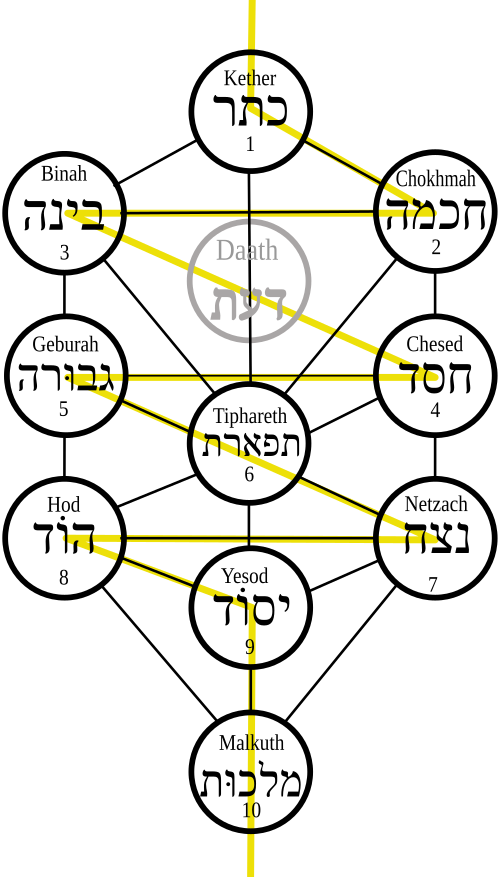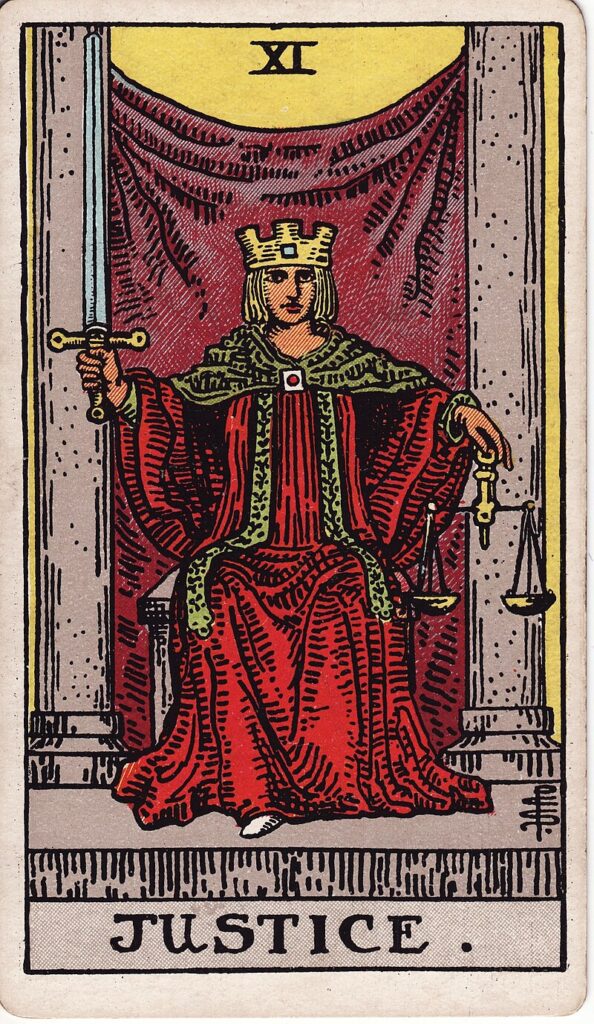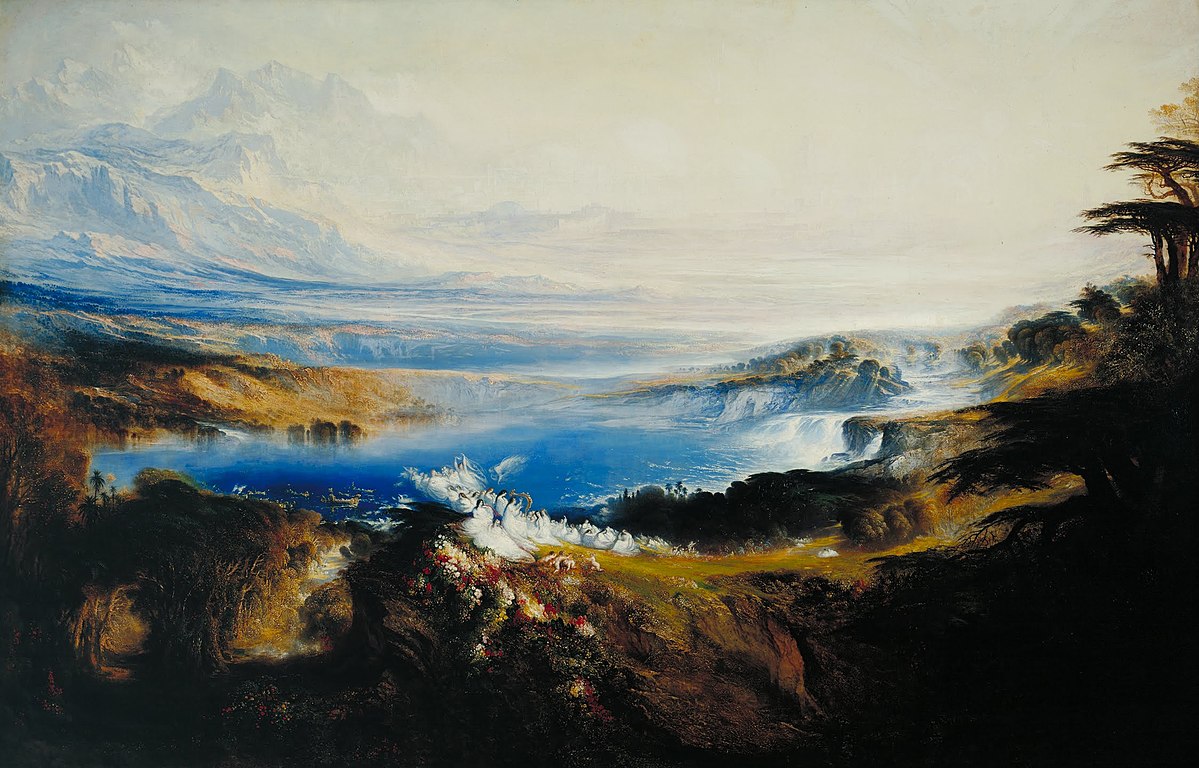At the heart of the Tree of Life, there is an aperture; a doorway inscribed in silence, shimmering between what can be said and what must remain unknown. Da’at is the veiled Sephirah, the secret locus in the kabbalistic architecture of the cosmos. It is both a presence and an absence; a knowing that exceeds knowledge and a mystery that cannot be resolved by intellect alone. The sages placed Da’at above the chasm, at the throat of the Tree, where the divine breath condenses into speech yet never fully becomes language. Many have labelled it knowledge, whilst in truth Da’at is the living experience of unknowing. It is the embrace of the fertile void, the luminous darkness, the cloud that conceals as it reveals.
This mystery is more than philosophical abstraction; it is lived, suffered, and at times glimpsed as a gift in moments of oracular vision, or, as in Rilke’s words, in the trembling that arises when the soul stands before the night. Da’at is the cloud of unknowing: the abyss from which creation is born and to which every wisdom must ultimately return. It is the space where all distinctions dissolve, and the one who seeks, finally, is drawn into the humility of unknowing. The silence becomes fertile, and the abyss becomes a womb.

I. The Hidden Bridge: Da’at in the Tree of Life
In classical diagrams, the Tree of Life is crowned by Keter, flanked by the opposites of Binah and Chokhmah, and rooted in Malkuth below. Between the upper triad and the lower worlds, Da’at hovers; neither counted among the ten Sephirot nor excluded from their interplay. It is the eleventh gate, the unnumbered bridge, a locus of paradox. Its appearance in the Tree marks the dynamic crossing between Wisdom and Understanding, the place where all distinctions meet, clash, and dissolve.
Kabbalists describe Da’at as the point where the supernal light, once hidden, becomes capable of being spoken or received, yet never fully possessed. It is the station of transition; the vortex through which energy descends, and also the veil which protects the unprepared from the burning intensity of the Divine. It is in Da’at that the knowledge of Binah and the wisdom of Chokhmah interpenetrate, with their union allowing something new to be conceived. Yet this newness is not simply another form of knowledge, but an invitation into mystery.
In the human psyche, Da’at appears as the breaking-point of certainty; the trembling before the Sacred. It is the feeling of being undone, of standing at the edge of understanding, where the only authentic gesture is to surrender into the uncharted. This is not a defeat, but an offering, a gesture mirrored in the mystical traditions of all ages, where the cloud of unknowing is the necessary precondition for gnosis.
II. The Cloud of Unknowing: Rilke and the Way of Un-Saying
The second stanza of Rilke’s IX poem, from “Poems to Night,” gives poignant voice to this experience:
What is ours: to exit unknowing
from the inner space that confounds us.
You appear out of our un-knowing
and inflame us as a mountain on fire.
Rilke’s vision is unmistakably kabbalistic. The poem draws a line between human limitation and divine emergence, insisting that the true epiphany arises only from within the not-knowing. It is precisely as the self abandons the fantasy of mastery – exiting the inner room, confused, empty-handed – that the Divine presence ignites. The burning mountain is an image of Da’at itself: a locus where presence is born of absence, where the mystery inflames rather than explains.
This is the cloud of unknowing as the Christian mystic would have it, but it also belongs to the Jewish Kabbalah, the Sufi annihilation, the Hermetic mystery of the veiled Sophia. In each tradition, the movement is the same: from certainty into unknowing, from speech into silence, from mastery into humility. Da’at is the furnace where the alchemist’s lead is dissolved; the palace of mirrors where the seeker is confronted with the emptiness at the heart of the quest.
In this light, “unknowing” is not ignorance. It is the surrender of the claim to knowledge, the willingness to stand in the face of mystery, to become a vessel rather than an architect. To rest in Da’at is to discover that the abyss is not merely emptiness, but a generative silence. It is a womb rather than a tomb.
III. The Eleventh Gate: Numerology, Tarot, and the Threshold of Mystery

Da’at’s numerical correspondence is as subtle as its place in the Tree. The Sefirot are said to number ten, yet Da’at’s presence as the eleventh is impossible to ignore. Eleven is the first master number in numerology; it does not reduce to a simple digit, but stands as a portal between worlds. It is the number of revelation, of heightened perception, of initiation into a higher octave of consciousness. Eleven is both double one, i..e, the doubled self, the mirror, and the liminal passage between the known and the unknown.
In the Tarot, eleven is the path of Justice (or Strength, depending on tradition). Justice is the sword that divides, but it also reconciles opposites. She holds the scales at the threshold, permitting entry only to those who can balance the claims of wisdom and mercy. Strength, as the alternative, is the gentle power that tames the lion, the courageous acceptance of what cannot be subdued by force alone. In both cases, the eleventh arcanum is the guardian of the gate; the one who stands between worlds, inviting the seeker to abandon certainty for the promise of transfiguration.
The I Ching’s eleventh hexagram is T’ai, Peace, the moment when Heaven and Earth meet, when the flow is harmonious, when the abyss has become a channel. Yet the next step is always the threat of stagnation, the twelfth hexagram known as P’i. Eleven is therefore the fulcrum, the edge, the place where movement is possible because rest is incomplete.
Da’at is the living image of the number eleven. It is the ever-open portal, the wound that becomes the well, the place where the boundaries between self and other, between knowing and unknowing, are continually traversed and renewed.
Epilogue: The Luminous Wound
Within the hidden architecture of the Tree, Da’at is the throne carved from absence, a seat whose occupant is the living question itself. The seeker stands unclothed before the Infinite, not as a supplicant demanding answers, but as a participant in a drama older than worlds. In the space of Da’at, the words of prophets, poets, and magicians fall away, leaving only the pulse of uncreated light.
The mystery of Da’at is that it remains perpetually in excess of the forms that attempt to contain it. Like the silent Name that can never be uttered, Da’at haunts the edges of thought, beckoning with a promise and a peril entwined. To enter its domain is to abandon the hope of a final meaning; it is to be initiated into a wisdom that continually empties itself out, renewing the vessel at the threshold of each question. Da’at is the abyss in which all fixed identities are dissolved; it is the pool of liquid night where the forms of the ten Sefirot are dissolved into luminous potential.
In the midrashic imagination, creation itself emerges from a point of contraction, a self-limiting of the Infinite to make space for the world. Da’at is this contraction in the soul: a Sacred withdrawal, a tzimtzum, that makes possible the encounter with the Real. The seeker who dwells here does not escape the world, but finds it transfigured; every object becomes a veil, every veil a mirror, every mirror an opening into greater depths. This is the mystery of the holy wound, the luminous gap, the emptiness that is at once devastating and fertile.
In Da’at, silence becomes a living voice. It is here that prayer ceases to be request and becomes simply presence, a listening that resounds with echoes from before the world was made. Those who learn to rest in this cloud do not return unchanged; they carry the scent of the unknown, the wildness of the night, and the humility that comes from having looked upon the face of what cannot be grasped.
The path of Da’at is the path of continual birth. Each descent into the abyss is also a return to the source, a homecoming to the unnameable, the silent throne, the luminous darkness from which all creation is ever coming forth anew.
